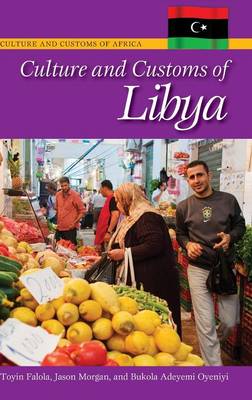Culture and Customs of Africa
3 total works
The decades of independence in Ghana have strengthened the idea of a national Ghanaian culture. The culture and customs of Ghana today are a product of diversity in traditional forms, influenced by a long history of Islamic and European contact. Culture and Customs of Ghana is the first book to concisely provide an up-to-date narrative on the most significant elements of the established cultural life and institutions as well as the most recent changes in the cultural landscape. Written expressly for students and the general reader, it belongs in every library supporting multicultural and African studies curricula.
Ghana seeks to cultivate the philosophy of the African personality, to revive, maintain, and promote Ghanaian ways of life and integrate them into political and social institutions. Ghanaians also recognize their relationship to the rest of the world and continue to develop with the forces of globalization. Culture and Customs of Ghana authoritatively discusses the vibrant and adaptable people, from their religions to music and dance. A chronology, glossary, and numerous photos complement the text.
Culture and Customs of Libya
by Jason Morgan, Toyin Falola, and Bukola A. Oyeniyi
Libya is one of Africa's largest nations, but its topography is dominated by a huge southern desert with some of the hottest temperatures recorded anywhere in the world. Culture and Customs of Libya explores the daily lives of the 90 million men, women, and children who struggle to get by in this authoritarian state, where only a fraction of the land is arable and 90 percent of the people live in less than 10 percent of the area, primarily along the Mediterranean coast.
In this comprehensive overview of modern Libyan life, readers can explore topics such as religion, contemporary literature, media, art, housing, music, and dance. They will learn about education and employment and will see how traditions and customs of the past—including those from Libya's long domination by the Ottoman Empire and 40 years as an Italian colony—are kept alive or have evolved to fit into today's modern age.
Amid a Sudan's dark history, saturated with conflicts and tragic current events, lies a culture with deep roots, going back as far as 8000 BC. With several hundred ethnic groups and languages, Sudan is one of the world's most diverse countries. Learn how these cultures have blended and collided throughout the centuries, and examine how traditions and customs are kept alive today. Religious beliefs, social customs, arts, literature, and cuisine are among the topics discussed in this volume, which is ideal for high school and undergraduate students.
Chapters include coverage on historical background, religions and worldviews, literature and media, art and architecture, cuisine and traditional dress, gender roles, marriage, and family, social customs, and music and dance.
A timeline of key events and bibliographical essay including print and nonprint sources supplement the work.

